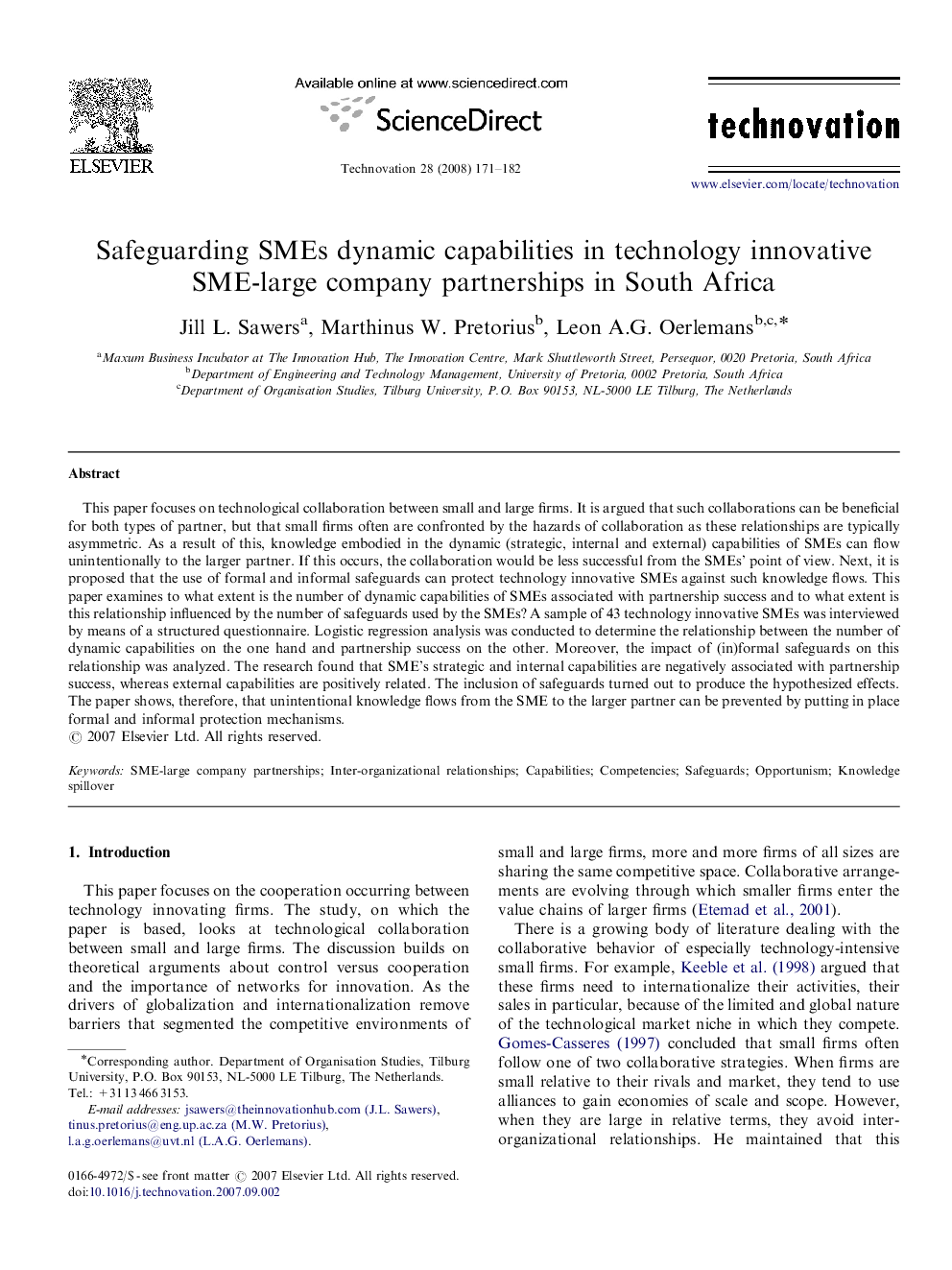| Article ID | Journal | Published Year | Pages | File Type |
|---|---|---|---|---|
| 1022800 | Technovation | 2008 | 12 Pages |
This paper focuses on technological collaboration between small and large firms. It is argued that such collaborations can be beneficial for both types of partner, but that small firms often are confronted by the hazards of collaboration as these relationships are typically asymmetric. As a result of this, knowledge embodied in the dynamic (strategic, internal and external) capabilities of SMEs can flow unintentionally to the larger partner. If this occurs, the collaboration would be less successful from the SMEs’ point of view. Next, it is proposed that the use of formal and informal safeguards can protect technology innovative SMEs against such knowledge flows. This paper examines to what extent is the number of dynamic capabilities of SMEs associated with partnership success and to what extent is this relationship influenced by the number of safeguards used by the SMEs? A sample of 43 technology innovative SMEs was interviewed by means of a structured questionnaire. Logistic regression analysis was conducted to determine the relationship between the number of dynamic capabilities on the one hand and partnership success on the other. Moreover, the impact of (in)formal safeguards on this relationship was analyzed. The research found that SME's strategic and internal capabilities are negatively associated with partnership success, whereas external capabilities are positively related. The inclusion of safeguards turned out to produce the hypothesized effects. The paper shows, therefore, that unintentional knowledge flows from the SME to the larger partner can be prevented by putting in place formal and informal protection mechanisms.
